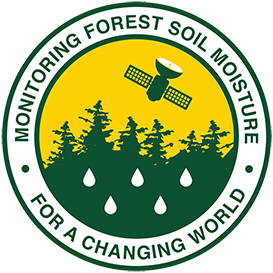
MTRI and the USDA Forest Service hosted a facilitated workshop, Monitoring Forest Soil Moisture for a Changing World, in Ann Arbor, Michigan, on May 15-17, 2018. Speakers and participants from several universities, USDA Forest Service, Michigan DNR, NASA, Canadian Center for Remote Sensing, USDA ARS, National Snow Ice and Ice Data Center, Colorado Climate Center, and USDA NRCS were invited to attend. Dr. Steve McNulty (USDA Forest Service) gave the plenary overview presentation, and 18 informative presentations followed.
The two-and-a-half-day workshop facilitated discussion among research scientists in forestry networks with stakeholders and federal, state, and private natural resource managers on contemporary and emerging soil moisture research and management issues, data availability, and data priorities. The overarching goal of this workshop was to develop a new strategic approach of research and monitoring on soil moisture issues for forest areas of the United States.
Objectives
Specific objectives were to:
- Discuss priority questions about soil moisture thresholds in forested lands that may indicate timely management actions
- Outline and discuss currently available and emerging soil moisture data
- Outline opportunities to integrate and synthesize data sets from a suite of existing agro-forestry research sites with contemporary digital environmental sensor data
Breakout Sessions
Workshop participants split into three groups on day two and day three of the workshop to address and strategize the key issues of forest soil moisture monitoring. Read the Breakout Questions.
Optional Data Tutorial
A hands-on, half-day data tutorial immediately followed the conclusion of the workshop focusing on the NASA Soil Moisture Active Passive (SMAP) mission and data. The SMAP mission provides high quality global soil moisture, brightness temperature and freeze/thaw state valuable to a wide range of government agencies, researchers, and private sector. Thematic applications of SMAP data products include droughts and wildfires, floods and landslides, agricultural productivity, weather and climate forecasting, etc. During the SMAP tutorial, members of the SMAP Science Team and the NISDC DAAC (Data Center) walked the class through instruction and samples for how to work with the data and apply it to their thematic area of interest. Participants learned how to access, apply, and overcome challenges of working with SMAP data.
- SMAP Data Tutorial Agenda
- Point and Areas Samples of SMAP Data Using AppEEARS
- Search, Order and Customize NASA SMAP Data with NASA Earthdata Search
- Visualize and download NASA SMAP Data with NASA Worldview
Workshop Organizing Committee
- Lead—Liza Jenkins, MTRI
- Lead—Duncan McKinley, USDA Forest Service
- Laura Bourgeau-Chavez, MTRI
- Nancy French, MTRI
- David Hollinger, USDA Forest Service
- Evan Kane, Michigan Technological University
- Larry Laing, USDA Forest Service
- Chelcy Miniat, USDA Forest Service
- Richard Pouyat, USDA Forest Service, Retired, University of Delaware
- Michael Strobel, USDA NRCS
- Cynthia West, USDA Forest Service
- Bonnie Wyatt, USDA Forest Service
Workshop Location
Michigan Tech Research Institute
Kiva Conference Room
3600 Green Ct., Ann Arbor, MI 48105
